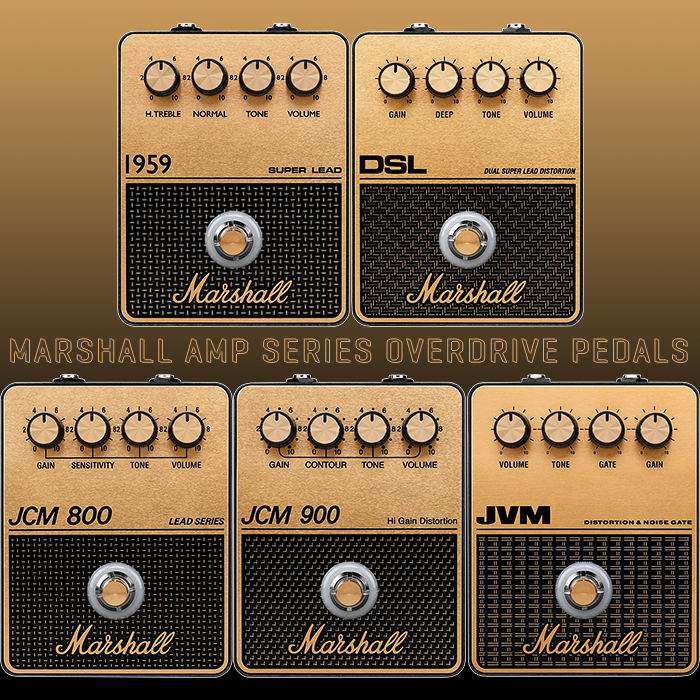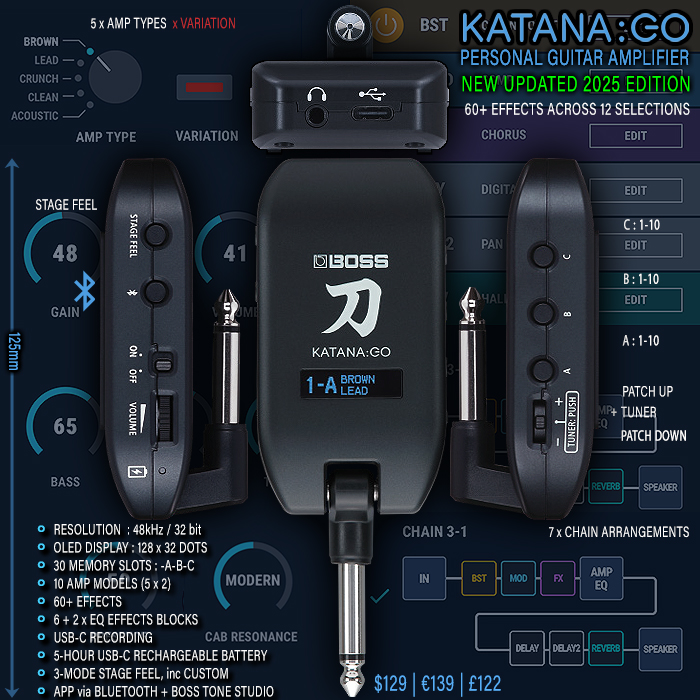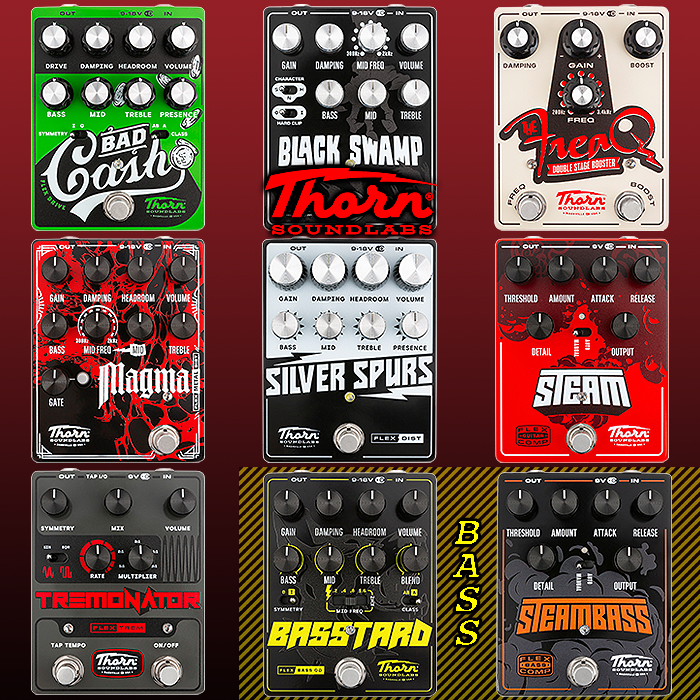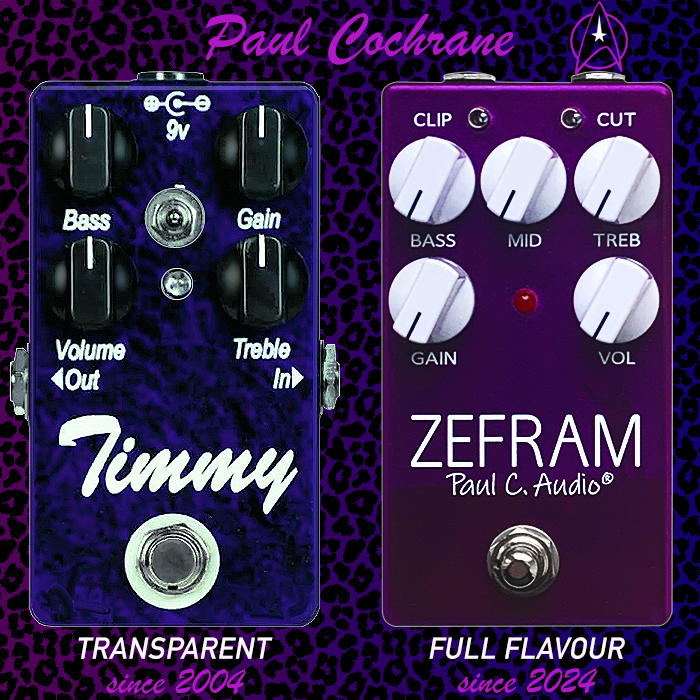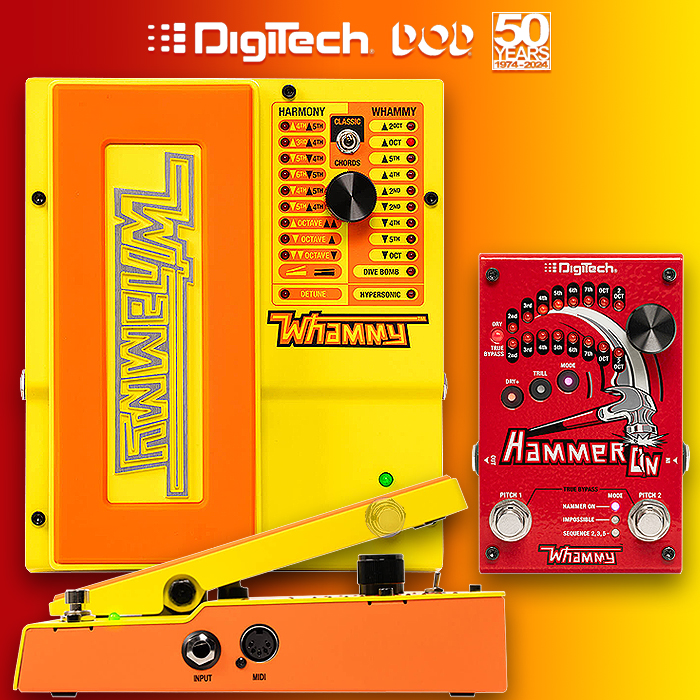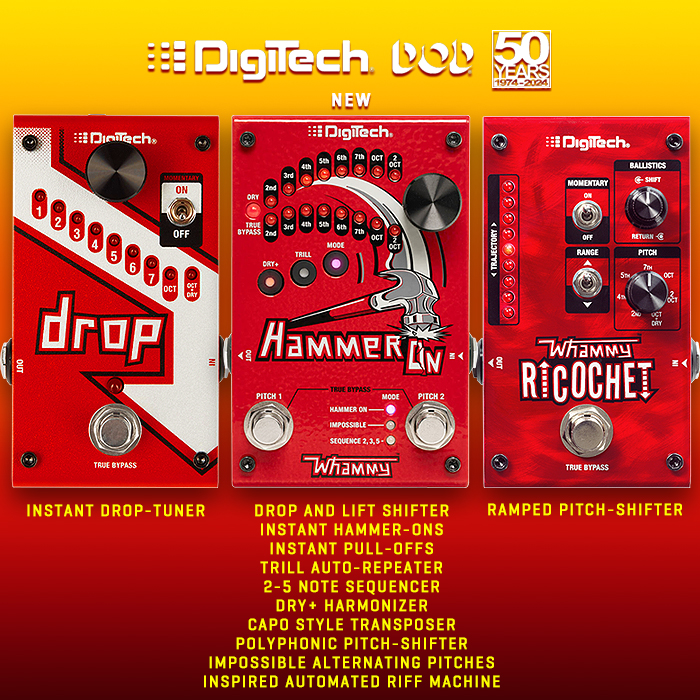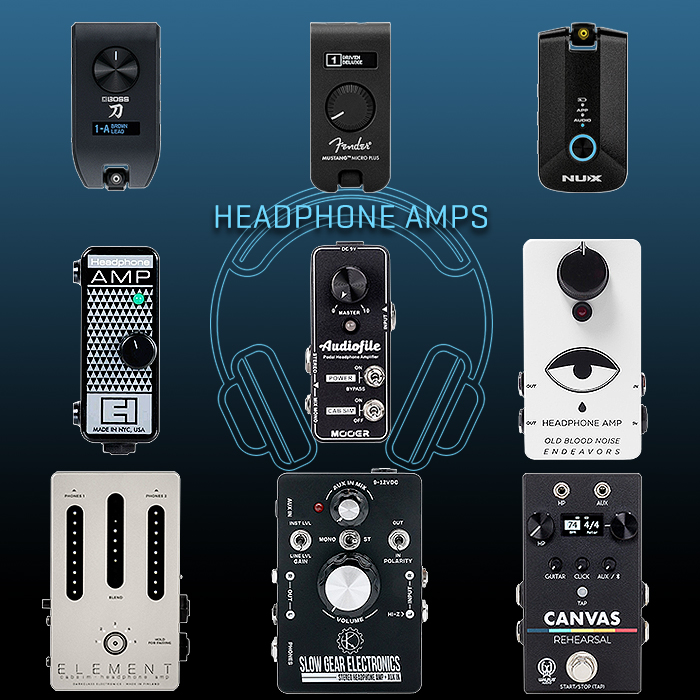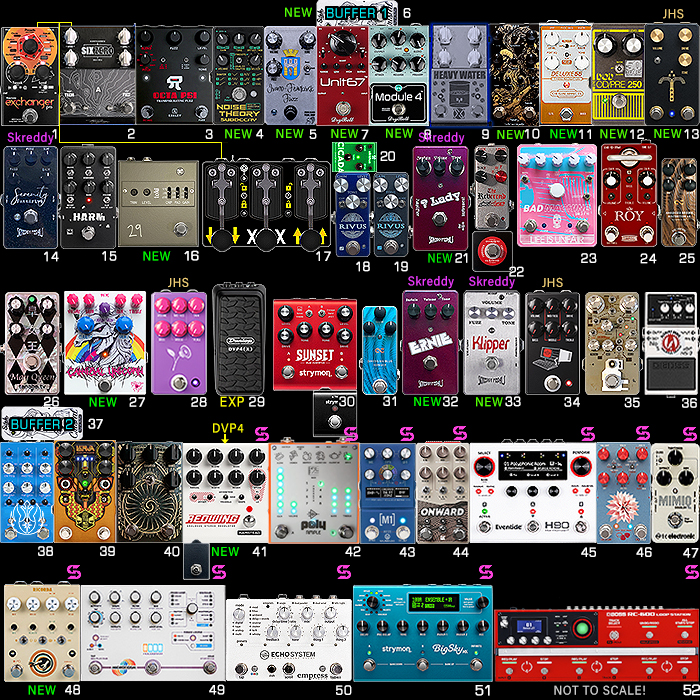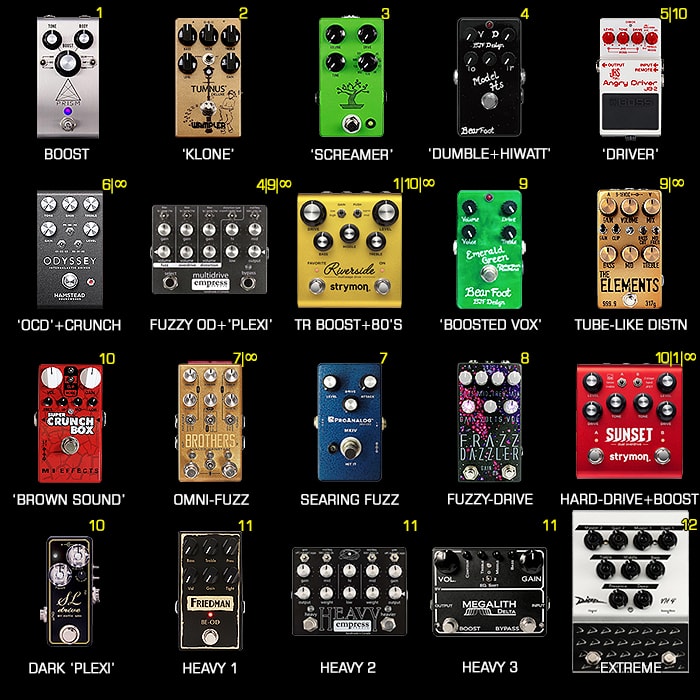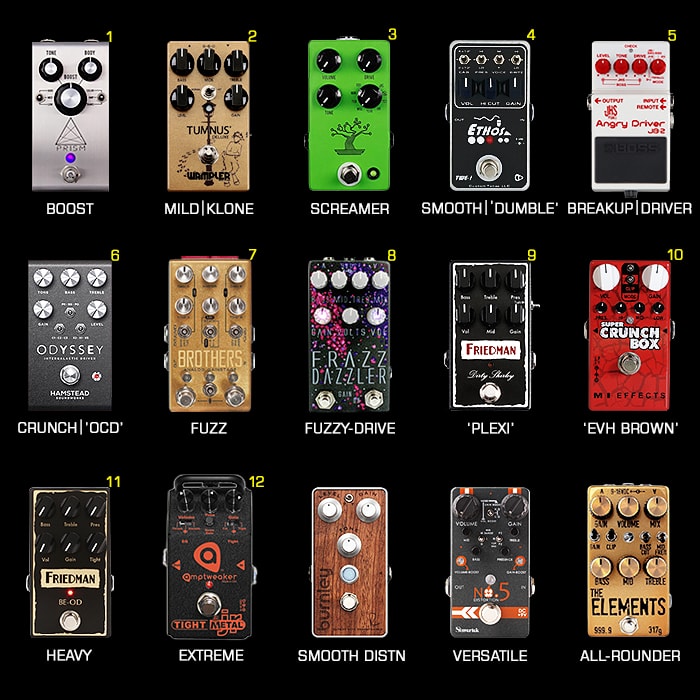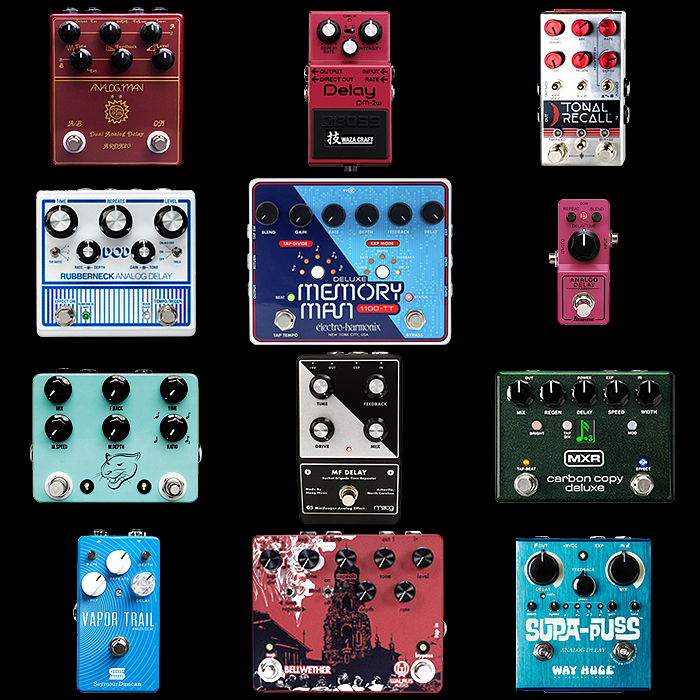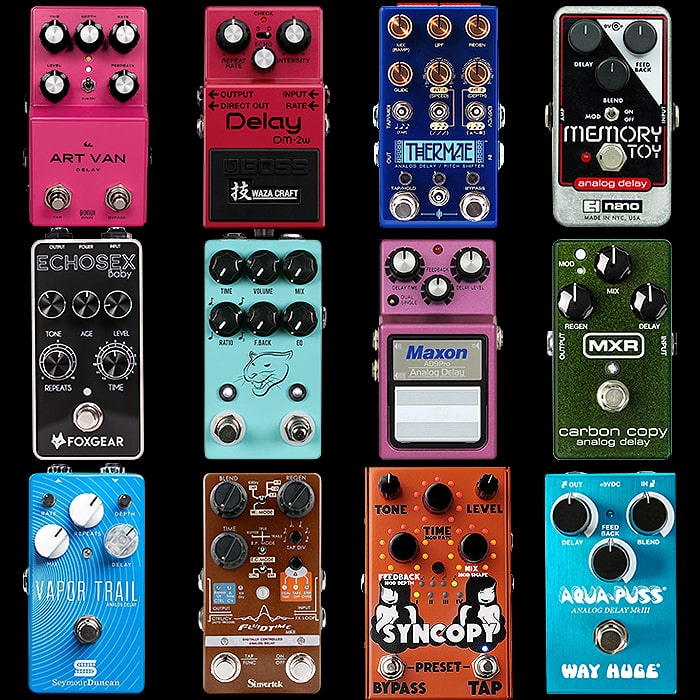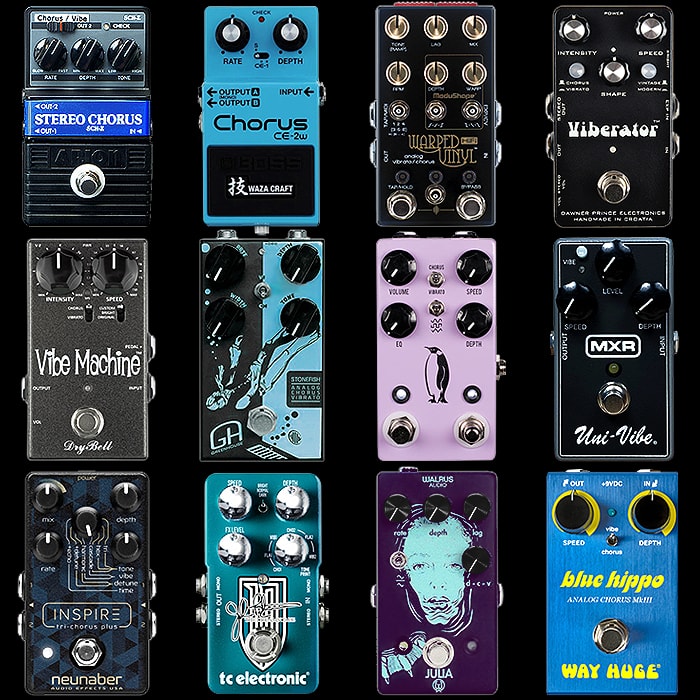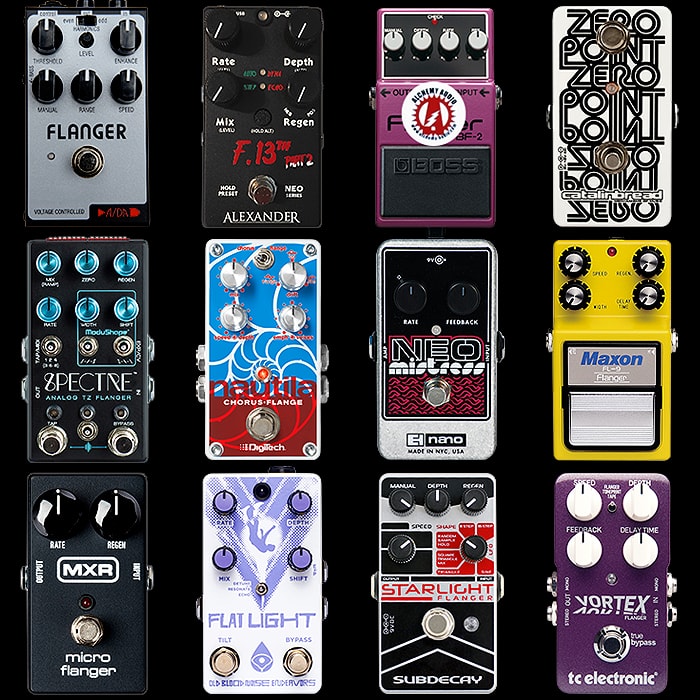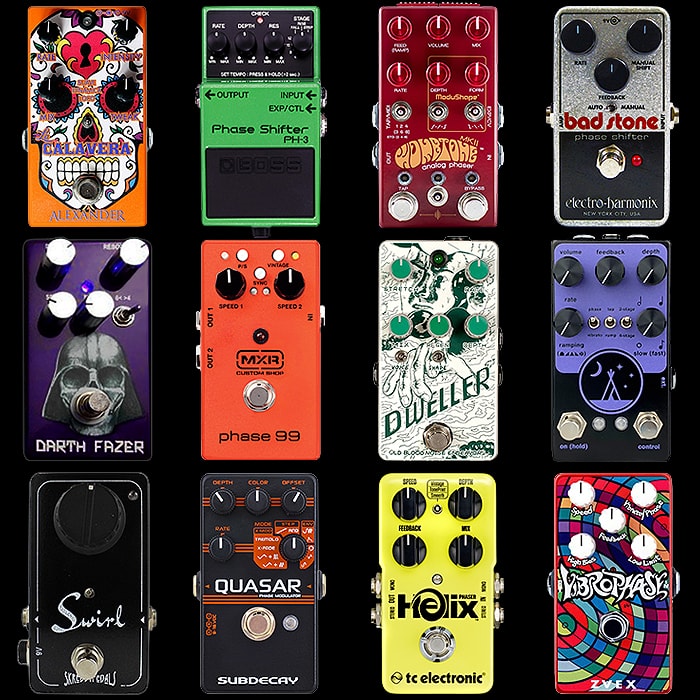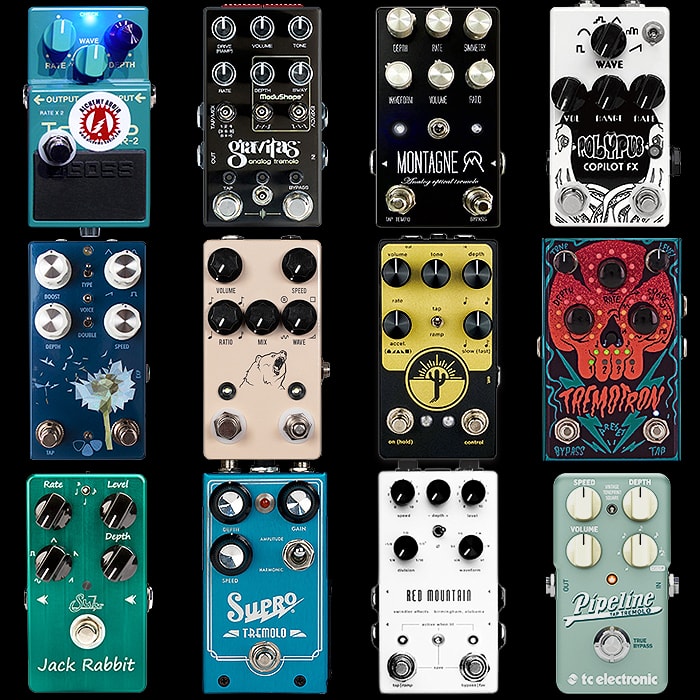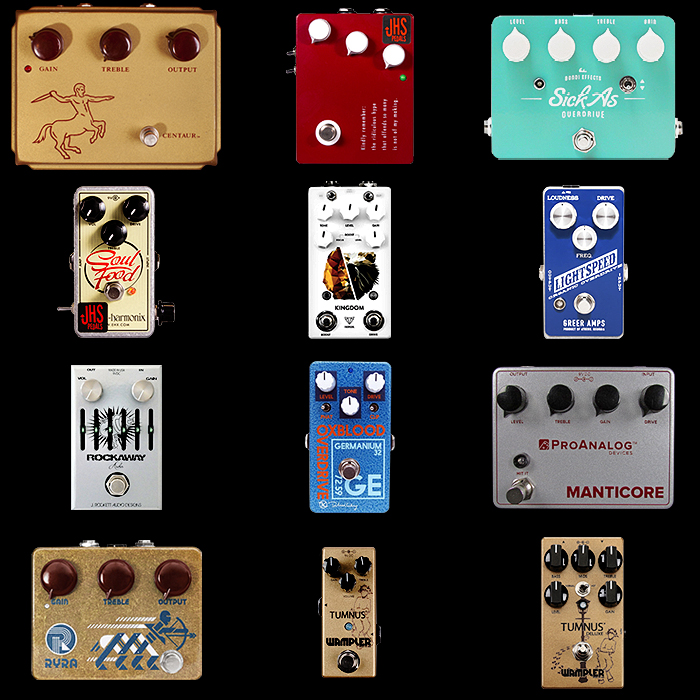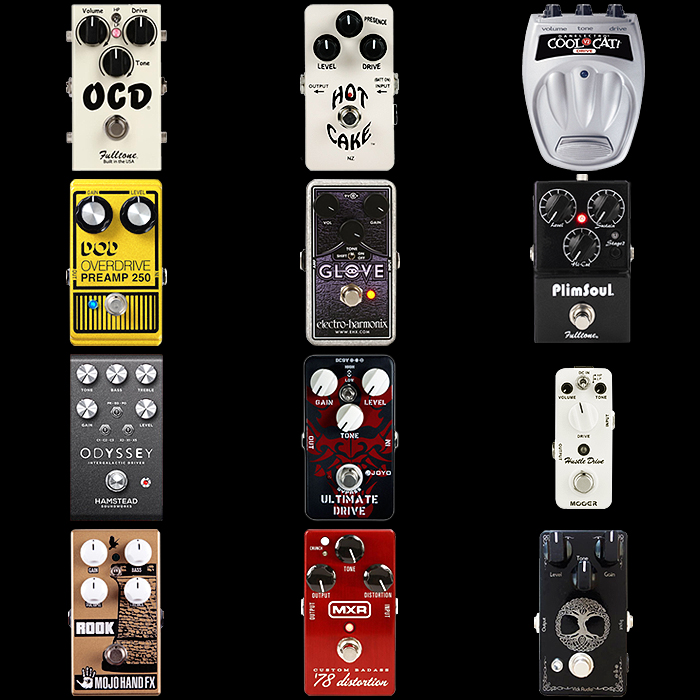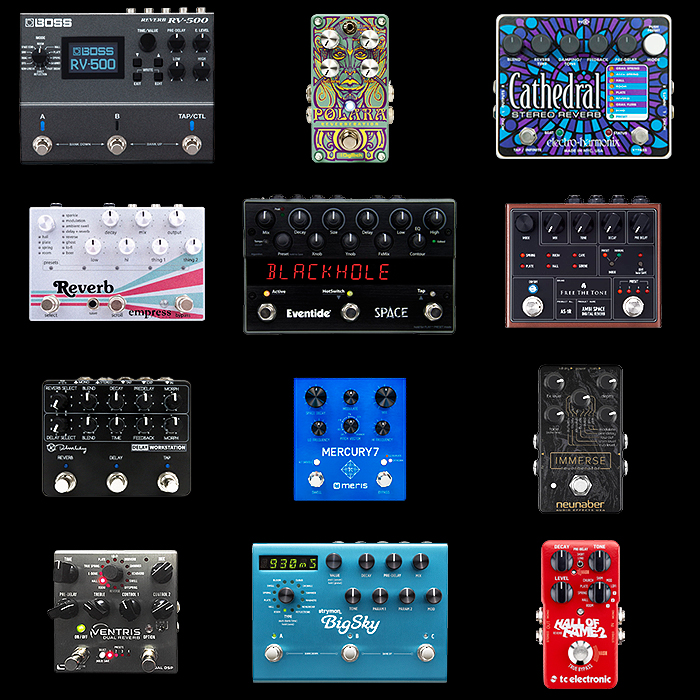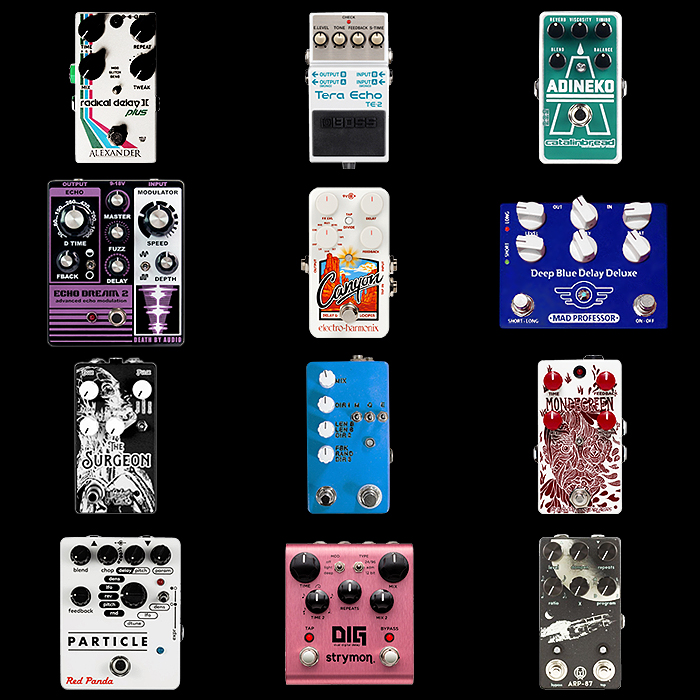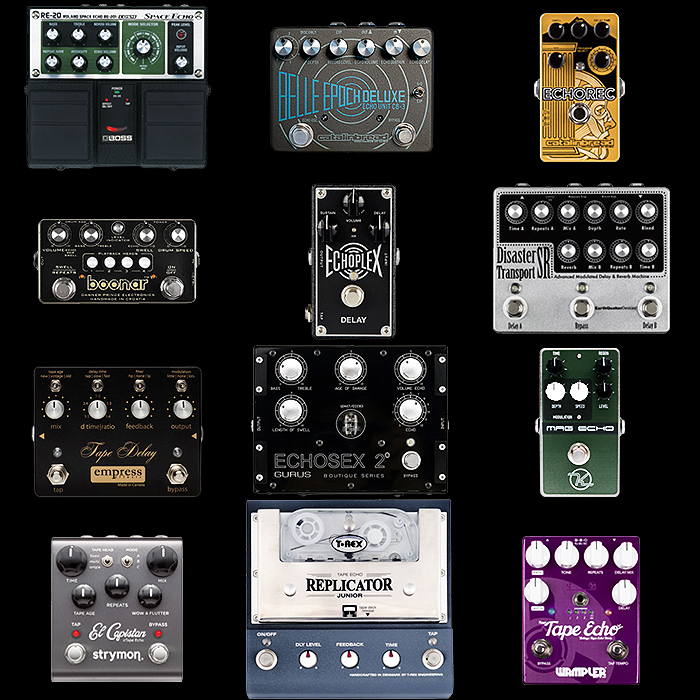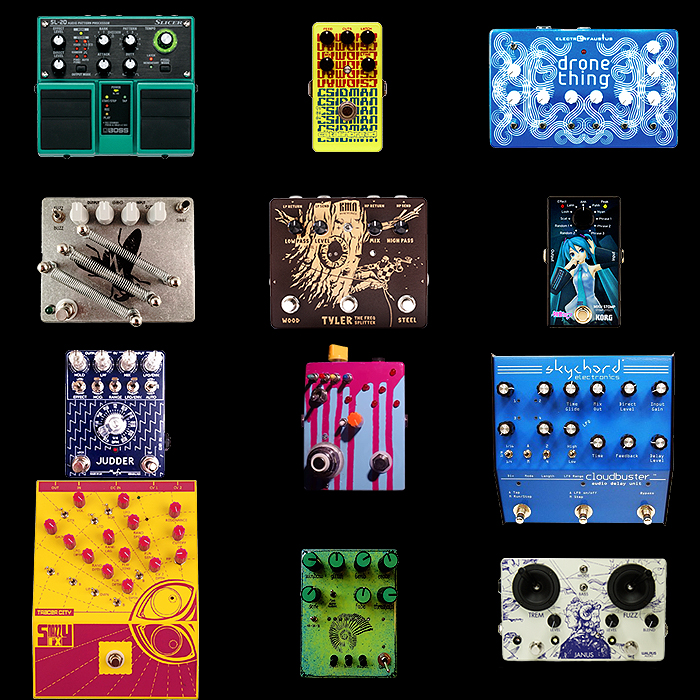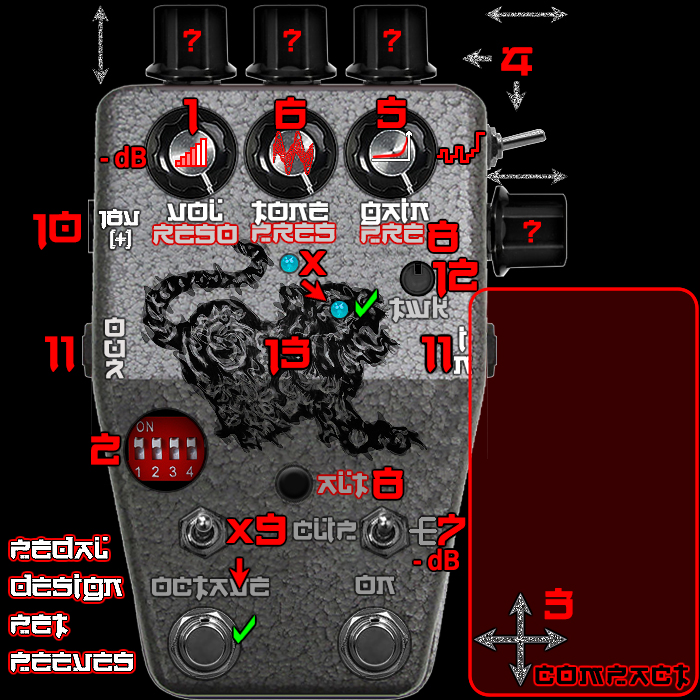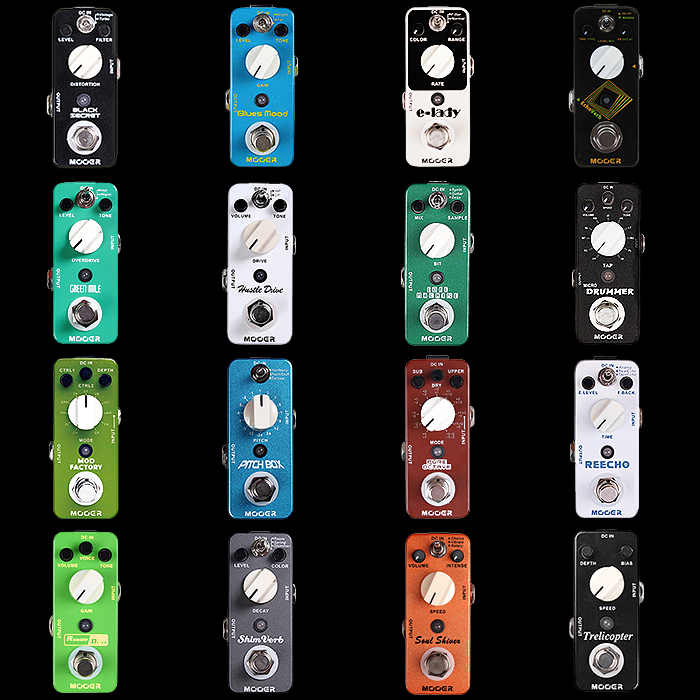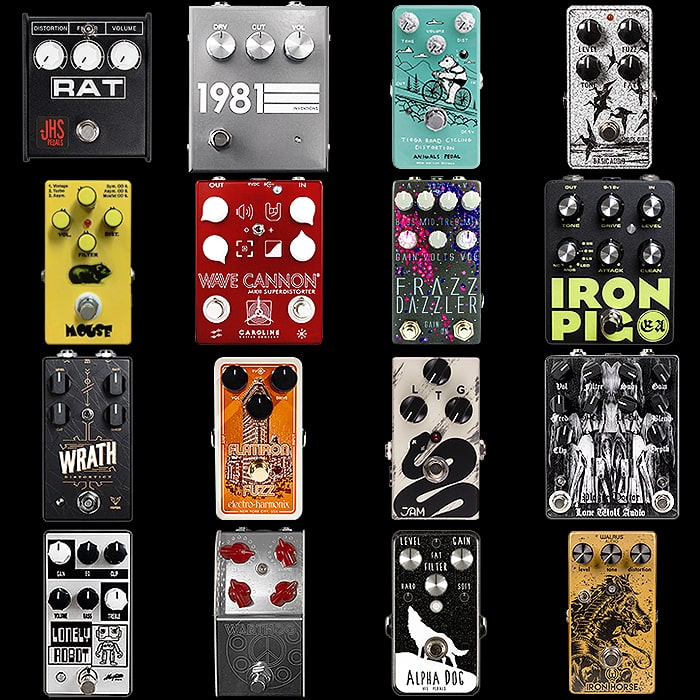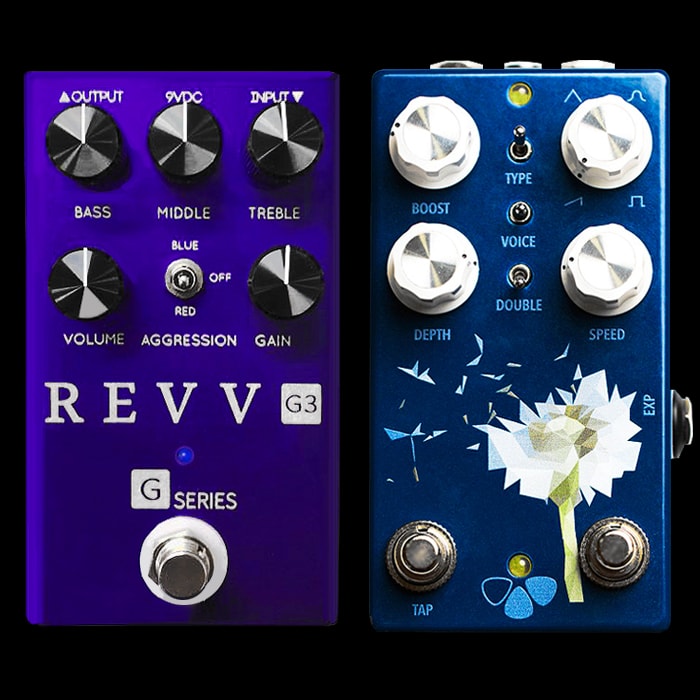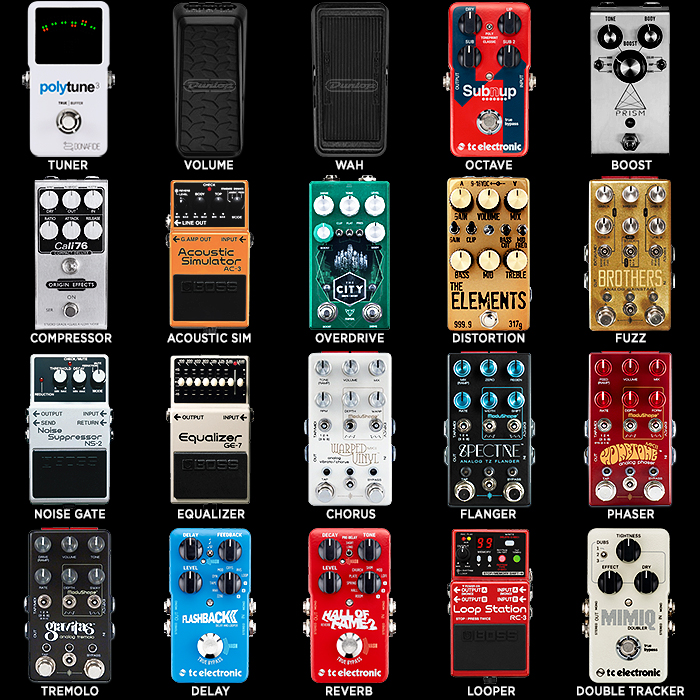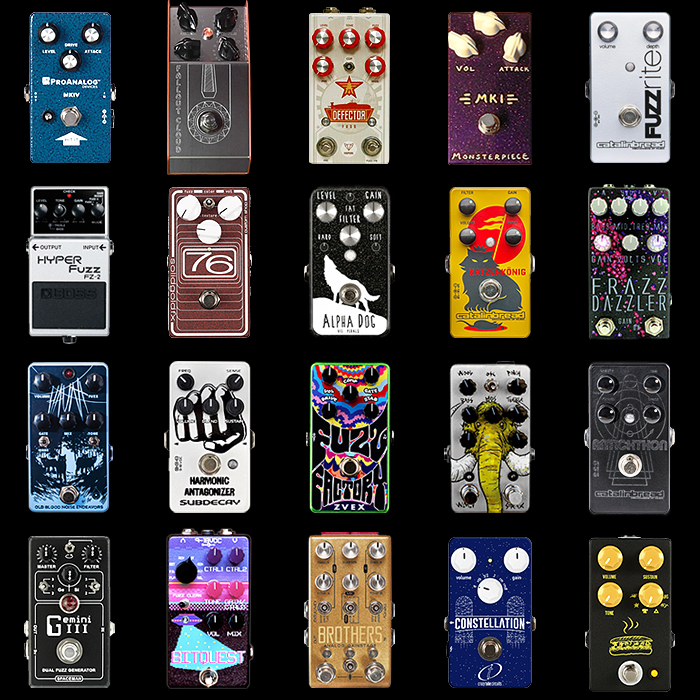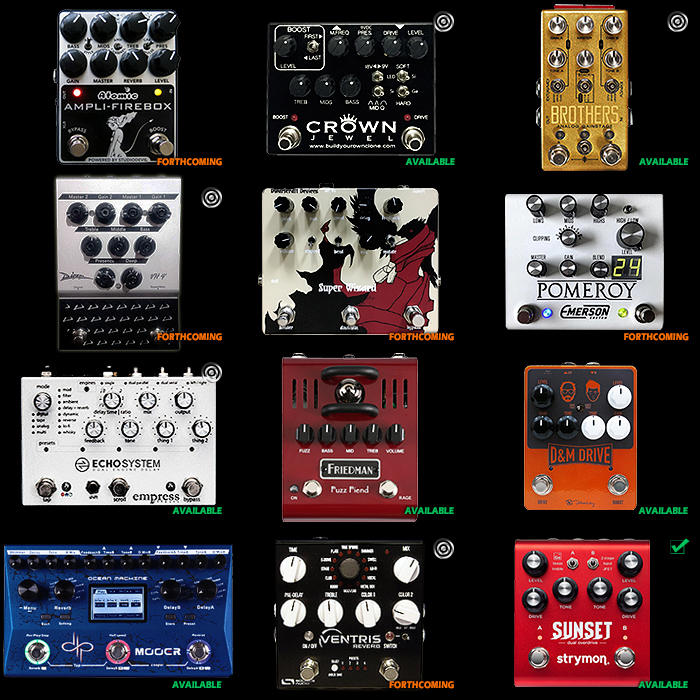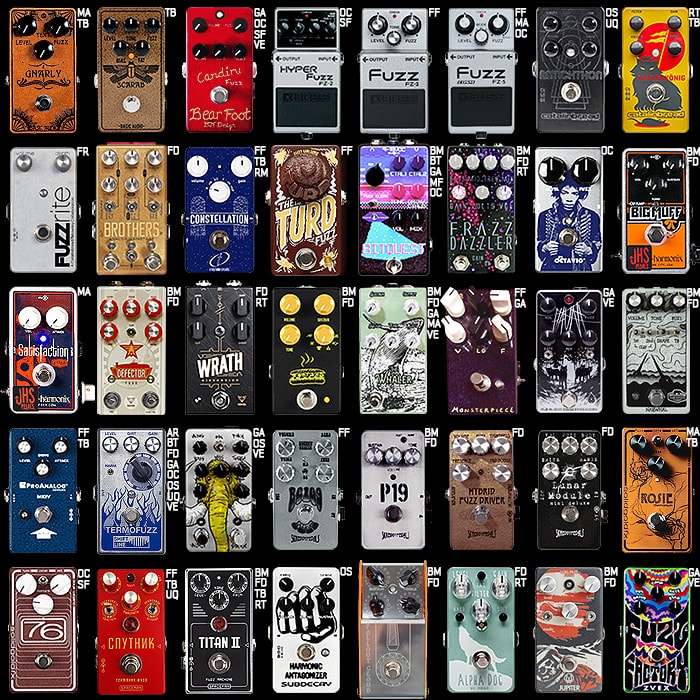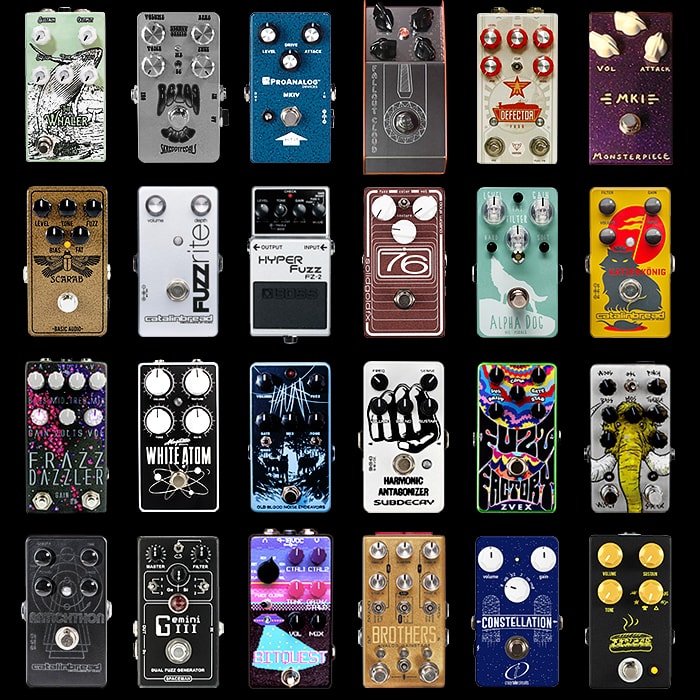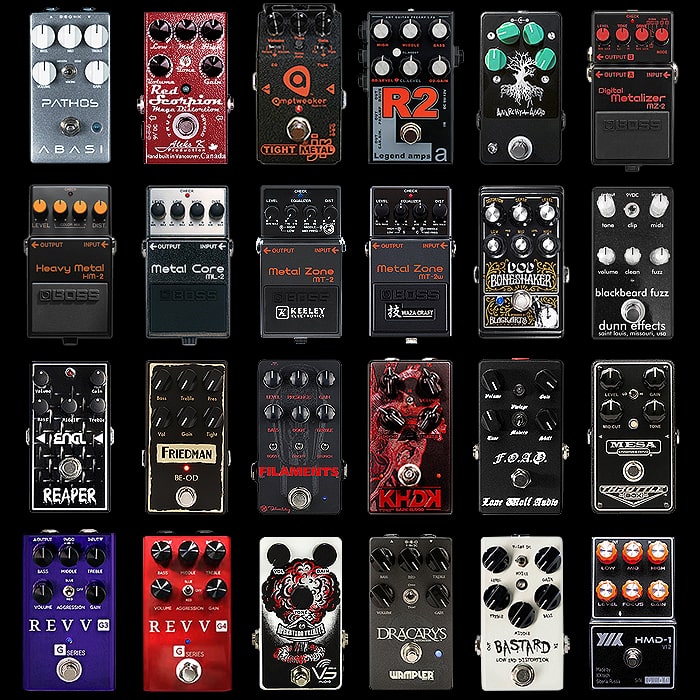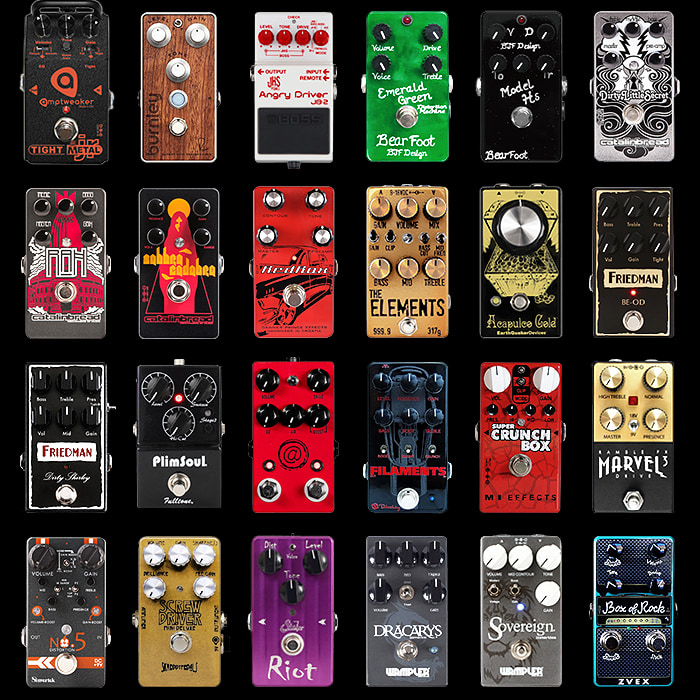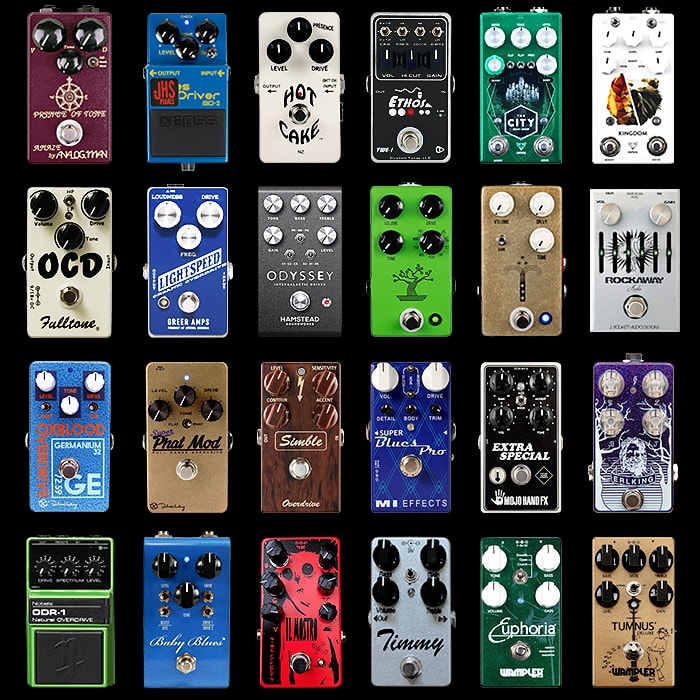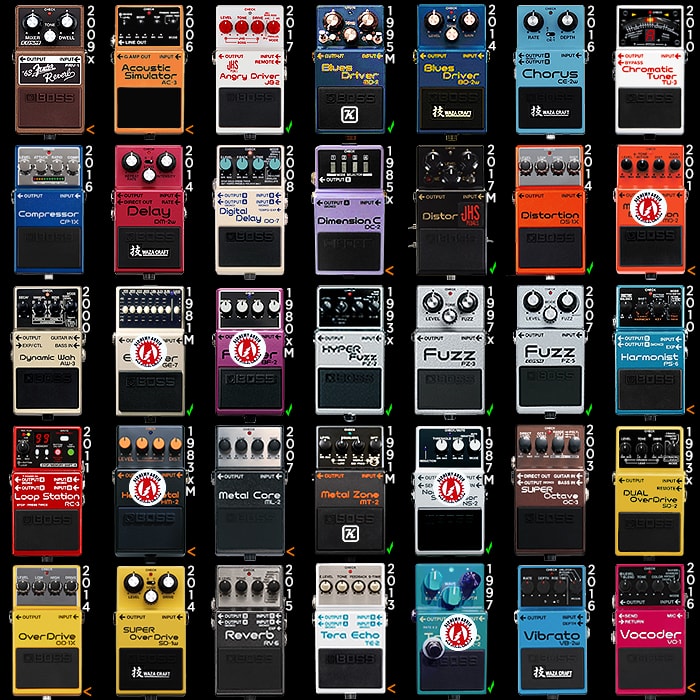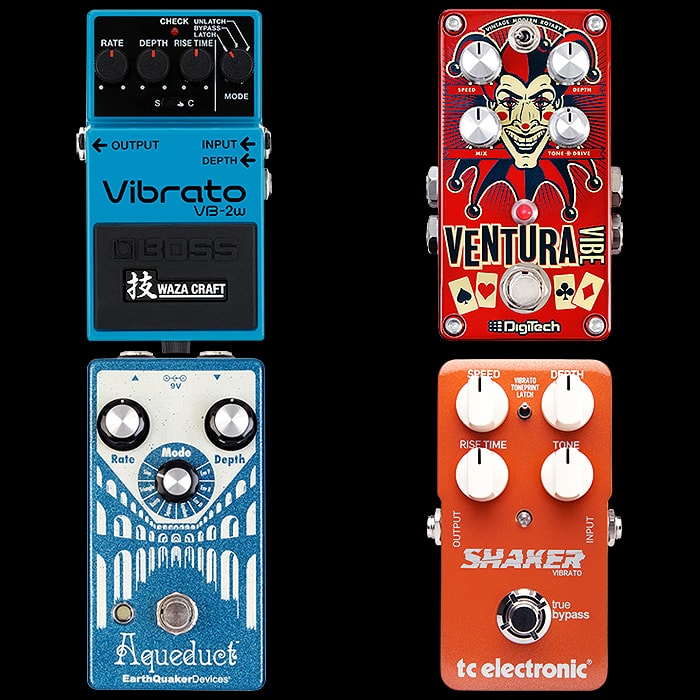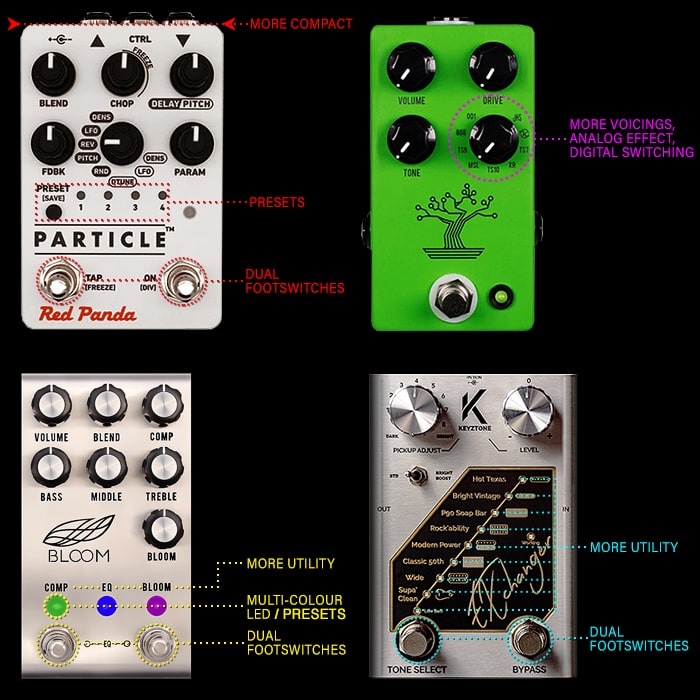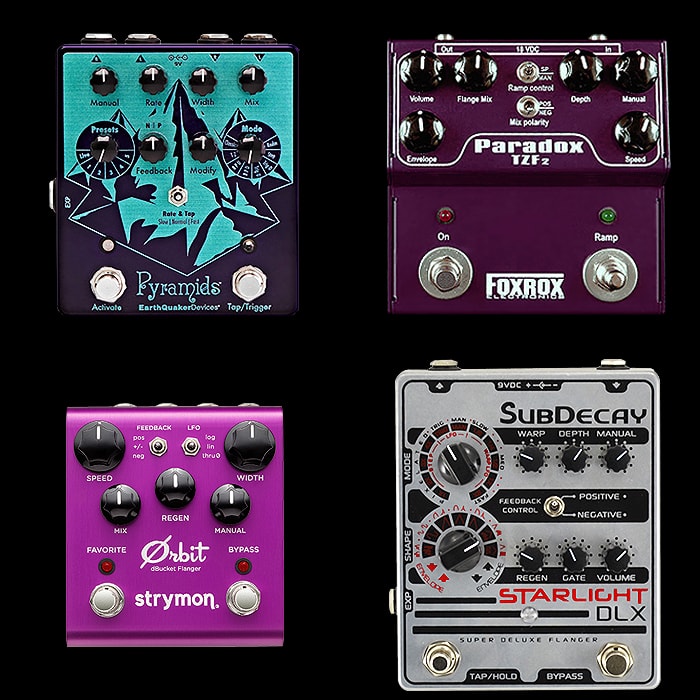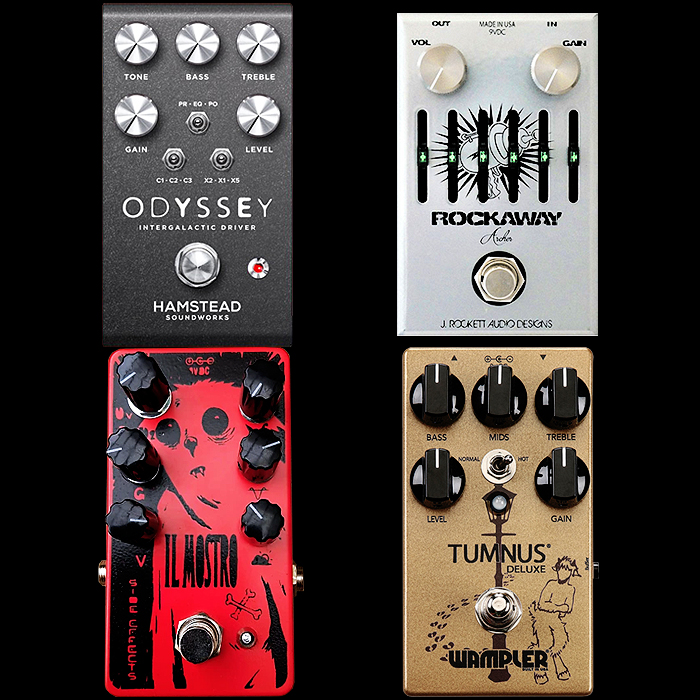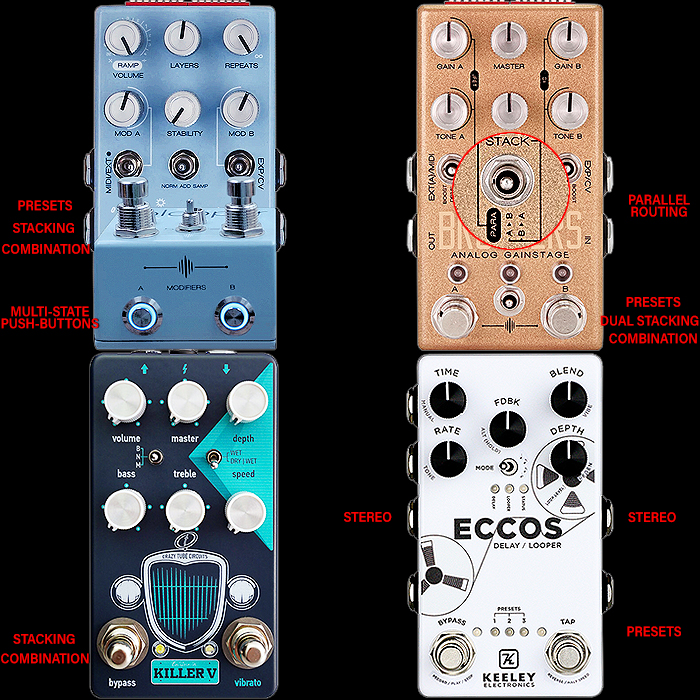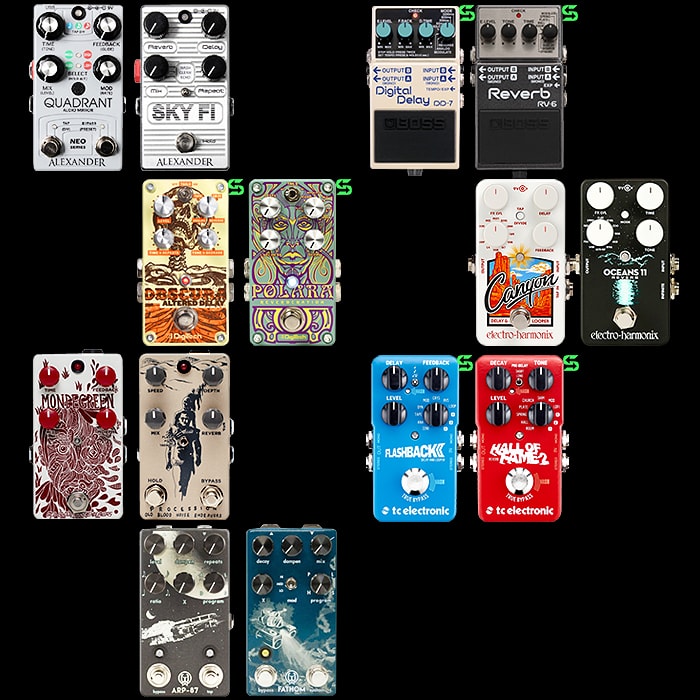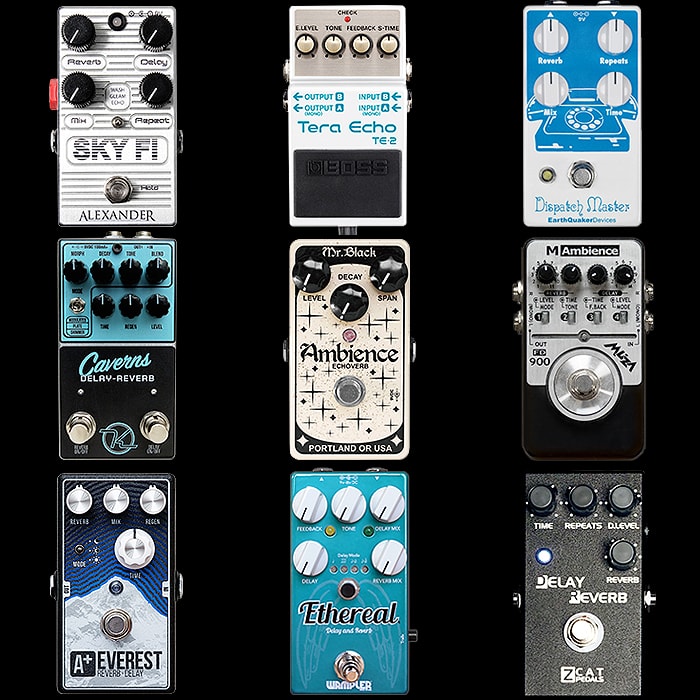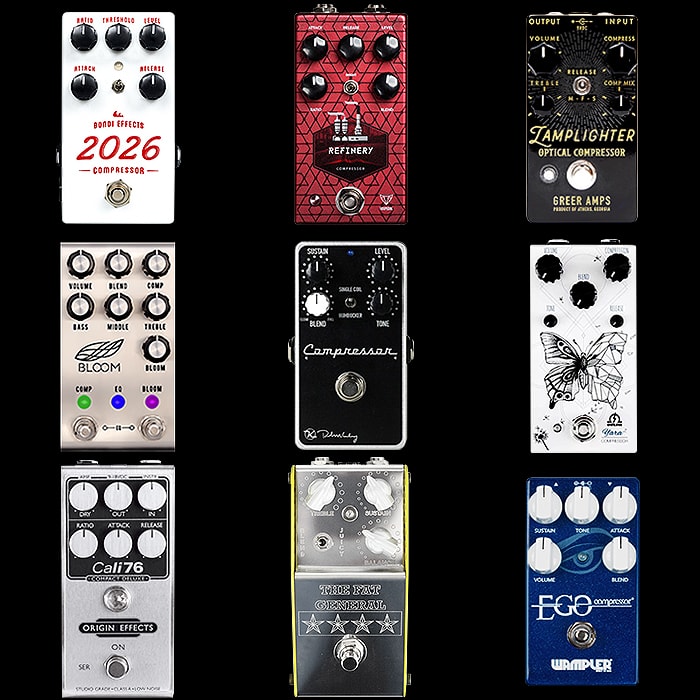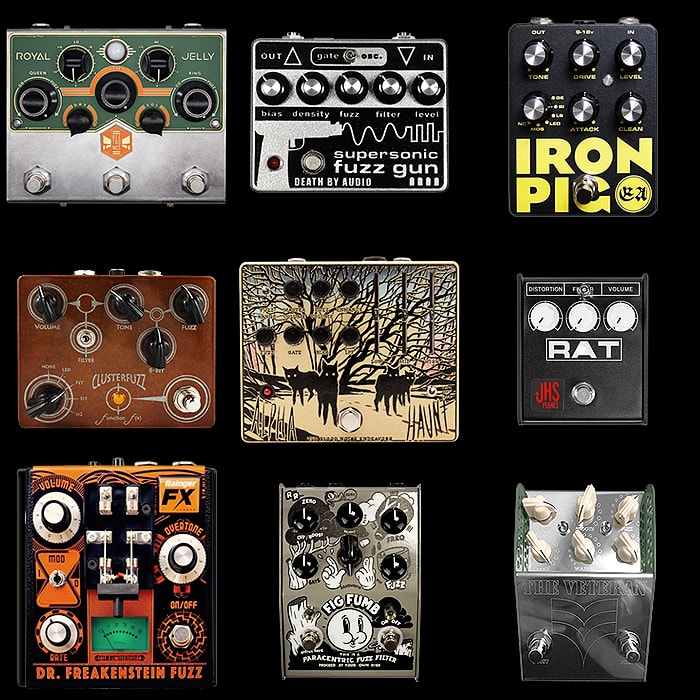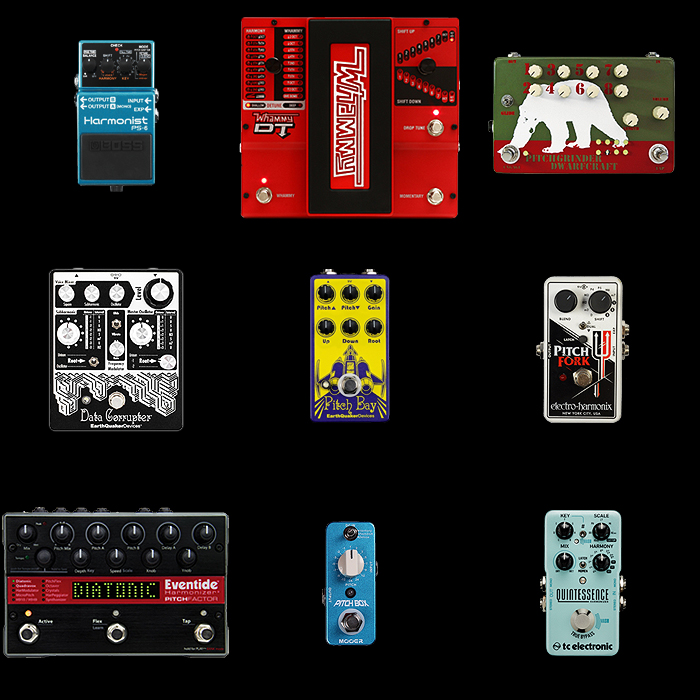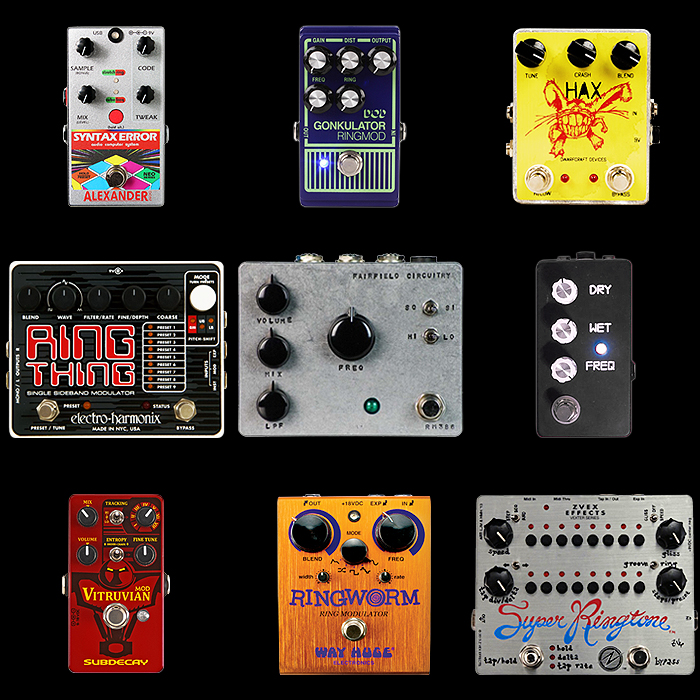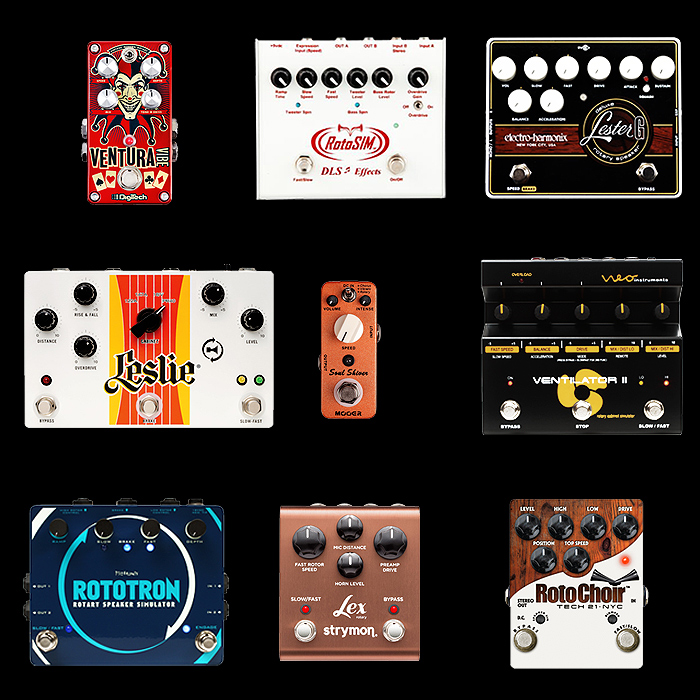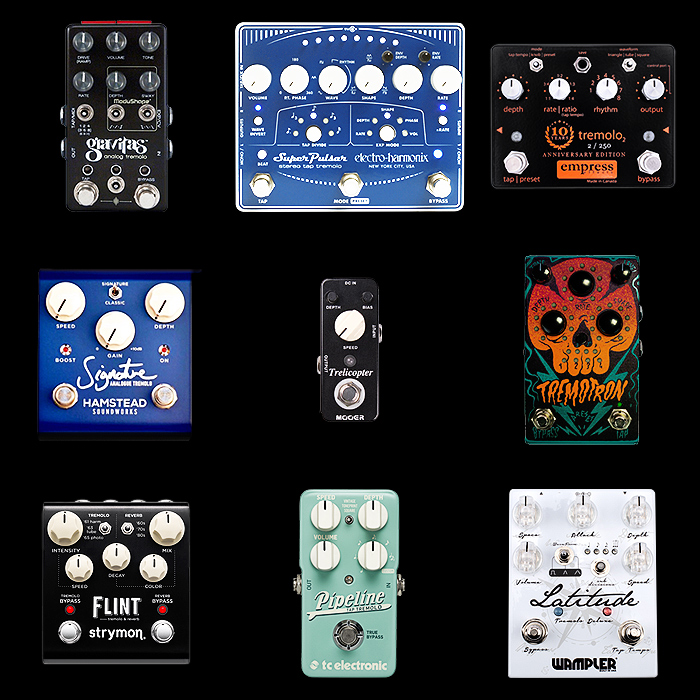The Perfect Compact Guitar Pedal Design
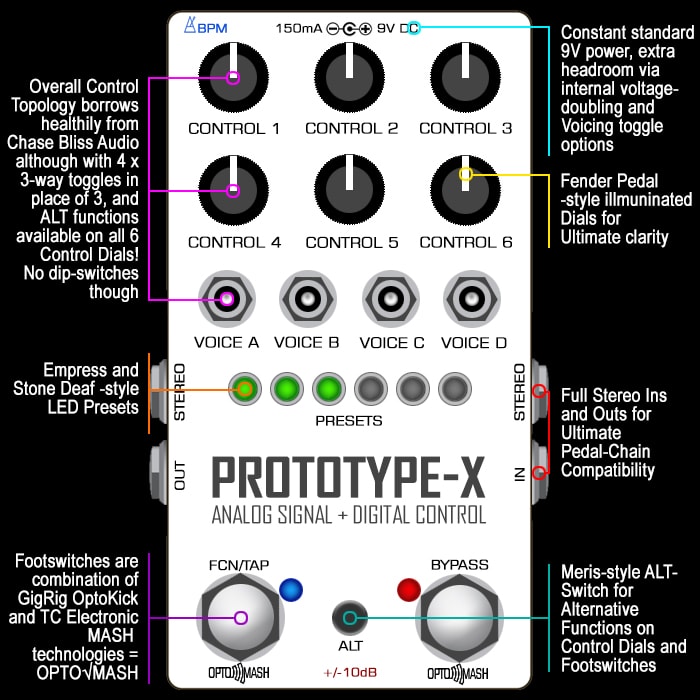
Guitar Pedals have come on in leaps and bounds over the past few years - becoming smarter, more capable, more versatile and smaller generally. To my mind the peak of pedal innovation can currently be found with Joel Korte’s Chase Bliss Audio pedals - of which I have 5 in my pedal-chain.
The Chase Bliss Audio Influence
In my recent 3 key pedal trends piece I touched on how the Chase Bliss pedal design / topology was influencing many pedal-makers. The two banks of 3 dials, 3 x 3-way toggle switches, dual footswitches and 3-way toggle presets switch. I currently have the Brothers Analog Gain Stage, Gravitas Tremolo, Spectre Flanger II, Warped Vinyl Chorus/Vibrato II and Wombtone II Phaser pedals which I love and use constantly. In fact Joel only very recently released a new Warped Vinyl HiFi version which I am still ruminating about. The new Warped Vinyl HiFi has a new brighter-sounding circuit and swaps the Volume dial for a Lag dial - for more smeared and warped effects. Yet that highlight a significant issue I have with several pedals - one of Volume / Output - which we will touch on later in this article. Along the top edge of each pedal, all Chase Bliss pedals also have 2 banks of 8 dip switches which control a variety of secondary functions as well as expression pedal settings. These settings are ever-so clever, tricky to get to grips with at first, but then just fiddly. In fact my key criticisms of the Chase Bliss pedals would be in their efficiency for live and spontaneous performance. Fiddling with the dip-switches and having to manually flick the presets toggle aren’t really practical solutions when playing live. Chase Bliss also has an add-on ’Faves’ preset controller - but that is not really a solution across several pedals. The answer is in a better onboard system for control and for presets q.v.
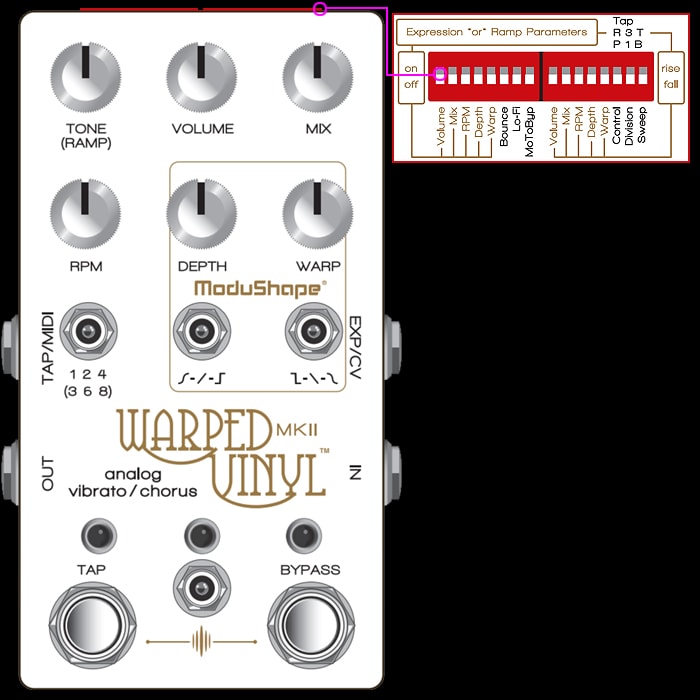
10 Perfect Pedal Features Top-to-Bottom
1 : Analog Signal + Digital Control
This is increasingly becoming the norm theses days - using wholly core Analogue circuits and components to maintain a wholly analogue signal path, but making use of a digital control layer for advanced functions and presets.
2 : BPM Sync
In this instance indicated by a mini metronome icon and the letters BPM - this is a small slimline cable which allows you to sync BPM across all your time-based pedals if you so wish. Lots of people use Midi - whose cable jack is too large for compact-size pedals really, and would require some sort of additional Midi control box or looper-switcher. For my purposes I want to keep everything fully on-board and not needing additional pedals or utilities.
3 : Current Draw Rating and Power Supply Symbols
Strangely relatively few pedals have the recorded Current Draw in milliamps (mA) on them - which is an essential requirement for knowing how to power said pedal. I feel all pedal-makers should clearly display Pedal Current Draw in mA and input type - Negative / Positive / AC / DC - which I have done here at the top of the front panel. Pedal-makers are increasingly using internal voltage controls and voltage doublers - they should ideally include fail-safes for someone inadvertently attaching the wrong / too highly rated power supply - and try to maintain the 9V standard which nearly everyone uses nowadays.
4 : Chase Bliss Control Topology
I really like Chase Bliss's two banks of 3 dials and 3 3-way voicing toggles. On my Dr Scientist The Elements we have the 2 banks of 3 dials separated by 4 x 2- and 3-way voicing toggles, so my preferred layout is really a combination of those two. As I will reveal later, and like the Meris and Strymon medium-enclosure pedals, the 6 Control Dials all have secondary / Alternative functions as controlled by the 'ALT' button switch which sits between the two Footswitches.
5 : Fender Pedal-style Illuminated Dials
The new range of Fender pedals had 2 really innovative features - the magnetic battery compartment, and the lit-up indicator dials on the knobs. Considering how much technology and functionality is onboard my Perfect pedal type, and the fact that I universally use isolated power supply, I don't think there will be space for a battery. But being able to see clearly and quickly what the dials are displaying is a key consideration.
6 : LED Style Presets
This is something both my Empress EchoSystem and Stone Deaf Tremotron Tremolo do really well. The EchoSystem has 5 LED indicators in 7 different colour banks, while the Tremotron has just 4. I however believe '6' is the magic number here. You would access the presets by hitting both Footswitched at the same time, then hitting both together again to scroll through the presets in cyclical fashion. Based on my usage, I feel 4 is too few, and that 6 is the most practical in terms of how many you need, and how many it is practical to scroll through in a cyclical fashion. In the visual you are currently on Preset 3 - additional LEDs light up as you scroll through the presets. To get out of Preset Mode and to return to Panel Mode you simply press down both footswtiches for 2 seconds. To save presets you would need to use the ALT button.
7 : Full Stereo In and Out
My issue with the Chase Bliss Tonal Recall and Thermae pedals is that they are mono only, and I rock a stereo rig with the last 6 pedals in the chain fully stereo, including Delay and Reverb. So much like TC Electronic does, the 2 sockets on either side just become stereo jacks - you can of course run in either Mono or Stereo - which gives you far more options on how and where to deploy this pedal. Since we're handling Midi and Expression functionality by other means - we don't need those types of sockets as can be found on all Chase Bliss pedals.
8 : 'OPTOMASH' Footswitches - onboard Expression Control!
It's no secret that the best standard type Footswitches are Daniel Steinhardt's TheGigRig OptoKick Optical Footswitches - as can be found on the various GigRig pedals and controllers, as well as Hamstead Soundworks' new Odyssey Intergalactic Driver - they are just effortless and offer the best reliability. In recent times TC Electronic has solved the perennial problem with external expression pedal control, by inventing a pressure-sensitive footswitch than can be used as an onboard expression pedal as such. In my example we combine the best of those 2 footswitches - using the optical latching system, and some variation of pressure-sensing or momentary sensing mechanic for expression control. By using a combination of quick press, long press, multi-press and variable pressure press across 2 footswitches - you can have amazingly dexterous control without the need for additional input devices.
9 : ALT Button Switch
Both Meris and Strymon Medium-sized enclosure pedals have Alternative / Secondary functions on their control dials - on the Meris this is enabled by a separate 'ALT' button, while Strymon uses long presses on footswitches - either singly or in combination to access secondary functions. As we will be using the Footswitches for Expression and Preset control, we cannot use the Strymon mechanic here, so we need a separate 'ALT' style button to access those functions.
10 : Decibel dB Rating
I get a lot of observations and complaints on my pedal comparison reviews for omitting to mention / cover volume loss / gain on specific pedals. Analogue modulations like Flangers, Phasers and Tremolos frequently 'absorb' or leach out some of the volume of your signal - and in deploying those pedals you often experience a volume-drop. Pedals tend to have very different volume ratings - and you find your Volume / Level / Output dials in very different positions depending on the pedals. For some pedals I have had to access internal trim-pots to raise output levels, or up power input from 9V to 18V by various means (voltage double / isolated supply). I call on pedal-makers therefore to come to an agreement on a standardised methodology for stating the actual likely output volume range - either as actual, +/- decibel or % level even. In my case I have indicated on the pedal a '+/-10dB' rating which means you have plenty of range to dial in the appropriate volume to match this pedal into your existing signal chain. This is why I am debating whether the new Warped Vinyl HiFi is truly suitable for me, as it has dispensed with the volume control. I find that for analogue modulation effects - some sort of volume control (with sufficient range) is an absolute necessity.
Final Thoughts
The obvious question here is who could or would want to produce such a pedal? There are lots of likely candidates that could, which in fact have a similar systems topologies and use analogue signal paths. TC Electronic have the manufacturing capability and innovation know-how to do this sort of thing, but they tend to rely on largely digital only effects for their modulation pedals.
There's a variety of Chinese manufacturers, like for instance boutique maker Sinvertek who already have 2 very clever multiple-control Analog/Digital pedals on the market, but I'm not sure they or Mooer say would necessarily be up for this. Which leaves the likes of Chase Bliss, Meris and Empress as the most likely to take something like this on. I certainly believe this deals with a number of limitations their existing pedals have. For TC Electronic Flashback and Hall of Fame pedals for instance, having presets onboard would make them finally properly viable for live pedalboard use. I think the same goes for Chase Bliss, whose current 3-way toggle preset solution is neat to a degree, but also slightly clunky and impractical - as is the 'Faves' add-on.
In terms of control topologies - most of those 6 Control Dials could / would be conventional 1-10 range sweeps or active -/+10 adjusters, while one or more could also be rotary selectors like on the TC Electronic pedals. So in having those 6 dials with Alternative / Secondary function capabilities you have the ultimate in easily visible and easily accessible / controllable interfaces. The 4 voicing toggles also don't all need to be 3-way, on the Dr Scientist The Elements pedal you have a mix of 2-way and 3-way switches.
I have to hasten to add that I am not an electronic engineer, so I am not fully au fait with all the technical challenges that my new pedal no doubt presents. Yet I am not really inventing anything new here, simply innovating and drawing on and combining what is already available, while adding some best practice principles on top.
There are other 'under the hood' innovations already happening - including improved signal-to-noise ratio, and the provision of onboard internal noise gates. All these features give you more flexibility and practicality - so you can use your pedal in more varied placements throughout your pedal- / signal-chain and outside your actual noise gate loop if necessary.
Obviously development of any kind of new topology and circuitry is time-consuming and involves lots and lots of testing, but I intrinsically believe that what I have set out and recommended here is not too much of a stretch from where things are currently. I look forward to seeing something in this ballpark fairly soon!







